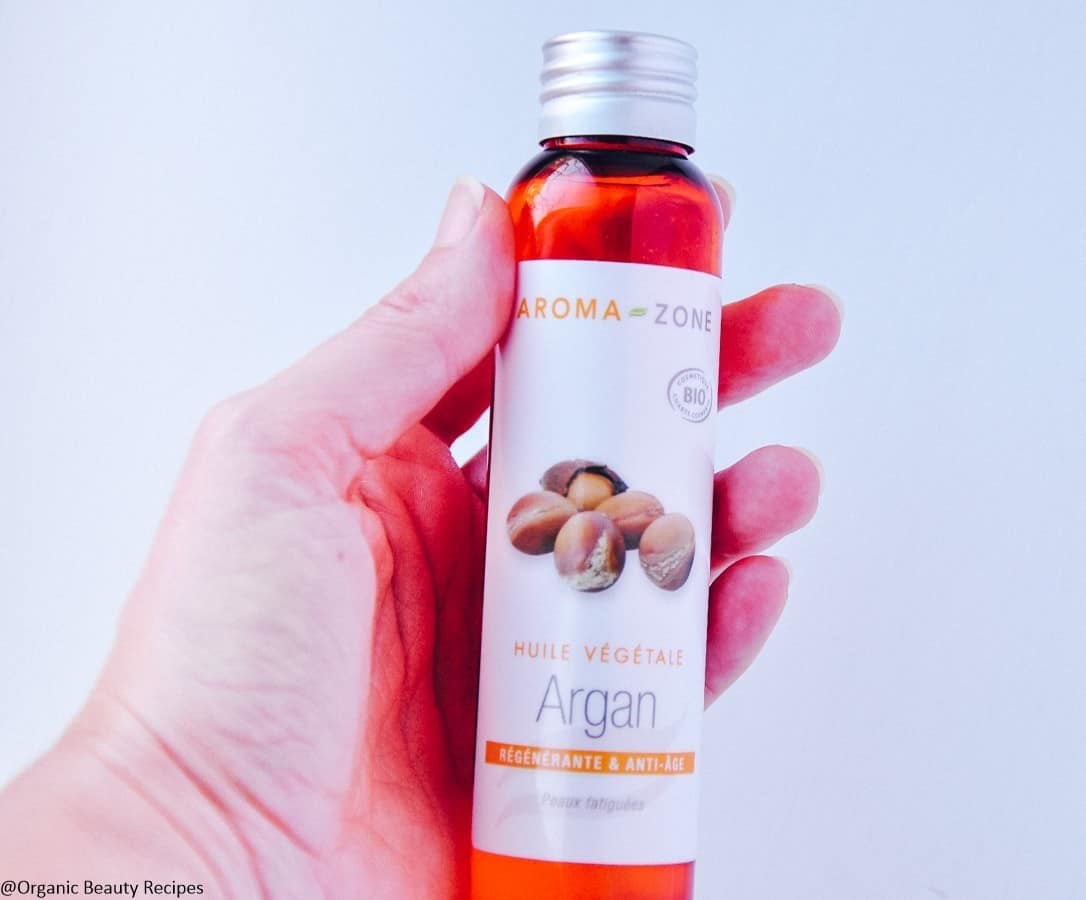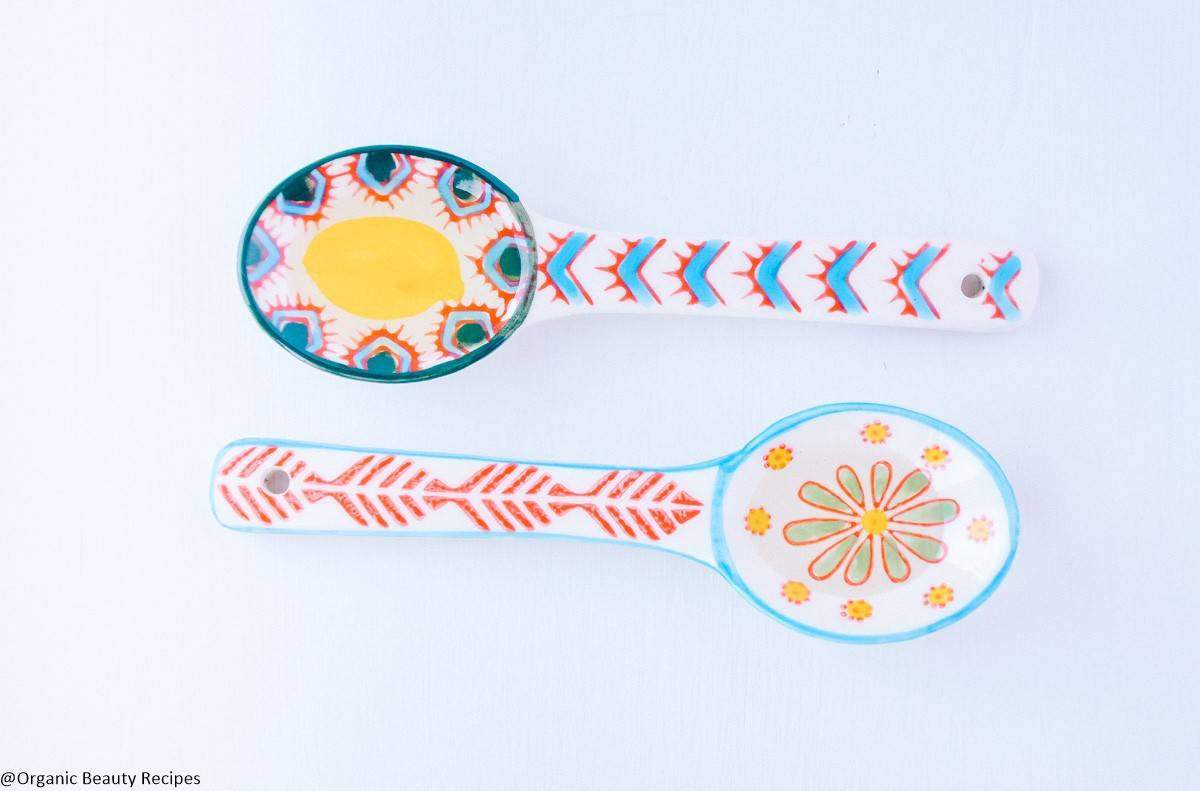“Organic Beauty Recipes By Eve – The Complete Guide To DIY Natural Beauty” is my long-awaited book, with a treasure trove of effective and easy to follow recipes with 100% natural ingredients.
You can order the ebook now on amazon for only $4.99 or get the paperback edition for $19.99 (USD).
I also launched my own small business offering all-natural raw shea Butter! Every time you purchase my Shea butter, you are supporting the Ghana women coop which employs 95 women and buys shea nuts from more than 5,000 women in 44 communities.
Lastly, check out my favorite shopping lists on Amazon . I will receive a small commission from the affiliate program Amazon if you order something and this is at no additional cost to you.
Thank you for your support!
The most frequently asked question I get is, can I replace this ingredient with another ingredient?
While most of the time, it changes the entire recipe, it is still possible to substitute one carrier oil for another.
For example, you can replace is safflower oil instead of camellia seed oil.
Why you might substitute a carrier oil for another one
Each carrier oil has its own properties when it comes to benefits to your skin, which is why you might choose one over another one. Or it may simply be a matter of what you have on hand. If you have purchased a lot of one ingredient, it makes sense that you would want to use it in as many recipes as possible.
A carrier oil is essentially the base oil in your beauty product. It is usually the most used ingredient in your recipe in proportion to the other ingredients, and it can make a big difference in terms of texture in your finished beauty product.
Common carrier oils include olive oil, grapeseed oil and jojoba oil, but there are tons more out there! Each has its own nutrient composition, texture, melting point, and absorption rate.
TOP 3 rules in DIY Beauty Ingredients Substitution
For substitutions in DIY beauty products, you want to make sure that you use an oil with similar properties to the one that you are replacing. Or, if you are making a marked change, be aware of the differences in the carrier oil you are selecting.
1.The speed of a carrier oil absorption in the skin
Not all oils blend into your skin the same way. Some have smaller molecules and absorb quickly, typically leaving little coating on the skin. Others have larger molecules – this gives them a luxurious, rich feel, but they absorb into the skin more slowly and may leave behind a faint and oily residue.
It’s easy to feel the difference in absorption rates just by rubbing some of the carrier oil between your fingers. Note how long it takes to feel like it is gone, and if there is a noticeable coating on your skin afterward.
Fast absorbing carrier oils
These carrier oils absorb easily into the skin and are great if you want to create a non-greasy cream or face serum.
- grapeseed oil
- apricot kernel oil
- camellia seed oil
- safflower oil
- Rosehip oil
- Babassu oil
- Baobab Oil
- Hemp Seed Oil
- jojoba oil
- Moringa Oil
- Perilla Seed Oil
Average-speed absorbing carrier oils
These carrier oils absorb into the skin at average speed and can leave a slightly oily feeling on the skin.
- coconut oil
- argan oil
- sweet almond oil
- kukui nut
- cocoa butter
- sunflower oil
- Black Cumin Seed Oil
- Canola Oil
- Chia Seed Oil
- marula oil
- Meadowfoam
- Pomegranate Oil
Slow absorbing carrier oils
These carrier oils are to be used in a low proportion in your DIY beauty recipe formula. It is typically added to other carrier oils to enrich their protein and vitamin content.
- evening primrose oil
- avocado oil
- castor oil
- shea butter
- flax seed oil
- Carrot Carrier Oil
- olive oil
- Macamia Nut Oil
- neem oil
- oat oil
You will have the best results with substitutions in DIY beauty products if you swap carrier oils that are of a similar absorption rate. If you want to make a mixture thicker or lighter, you might substitute a quick-absorbing oil for an average rate oil for instance, but you may need to play with the ratio of the other ingredients.

2.The texture of the oil or butter
Each oil and butter has its own texture, which contributes to the formulation of the DIY beauty product. For lotions, it is easy to switch ingredients to produce a lighter or heavier textured cream. But, for other products, such as lip balms or lipsticks, the texture plays a huge role in giving the DIY beauty product its form, and you want to be especially careful with substitutions.
An oil may be liquid, soft or brittle.
Liquid oils
- Olive oil
- safflower oil
- argan oils
Soft Oils
- coconut oil
- shea butter
- mango butter
Brittle Oils
- Cocoa butter
- kukum butter
- illipe butter
Oils also have other properties and texture like being smooth, thick, or sticky. They can also have different smells so you need to take this into account when doing substitutions.
This will make a difference in your product so you need to pay attention to that as well!
3.The Melting point
The melting point is an important property of each oil when it comes to a recipe. Recipes are formulated around specific melting points.
So for the best substitution in your DIY beauty product, you want to choose a carrier oil with a similar melting point to the original one – otherwise, you will need to change the recipe too much to make a good end product. The melting point is also important for the application.
Oils with a higher melting point will not rub into the skin the same way as oils with a lower one. For instance, think of a lip balm: you want it to be firm to the touch but to melt into your skin on contact. Specific oils will help to achieve this effect.
- Coconut oil melts at 24°C (75°F)
- Shea butter at 38°C (100°F)
- Cocoa butter melts at 34°C
Looking at the above melting points, you can substitute Shea butter for cocoa butter if needed since they have similar melting temperatures.
You should avoid substituting coconut oil for Shea butter or cocoa butter as the texture as in the end beauty product would be different.
That being said, you can always experiment which is part of the fun of making DIY beauty products!
The key to substitutions in DIY beauty products is to be mindful of the specific properties of the carrier oil the recipe calls for and the one that you would like to use.
To summarize, using a carrier oil that is similar in texture, melting point, and absorption rate will give you a greater chance of success.
I hope you have enjoyed my recipe, please share the love and rate ***** in the comments below!


Thank you sooo much for this article! I’m printing it and I know I will be using it ALOT! Very helpful
Thank you so much for this article
Author
welcome 🙂
I just bought a kilogram of oat butter! I see many recipes using oat oil but none using oat butter…do you know which category it would fall under? I think I read that it is softer than shea butter, but I’m looking for more information on oat butter’s properties before I dive into making some lotion and/or lotion bars with it. Thank you so much for your website and all the amazing resources on it!! I’m so inspired! This is new for me. Cheers!
Hi Eve
Thank you so much for this article on substitutions. It is not always economical for a ‘newbie’ to buy some of the ingredients in a recipe when we already have a substitute on hand. I will be printing your article and saving it in my binder, as I know I will be using it a lot. Here’s wishing you success. Regards
Dee B.
Hello!
I am allergic to coconut oil and can not find any good recipes for body butter or whipped body butter without coconut oil.
I was hoping for more than just shea butter and sunflower oil. I was hoping for a recipe with like rosehip seed oil, sunflower oil, shea or mango butter etc…
What can I use as a substitute for coconut oil?
Thank you!
Where have you been all my life?! THANK YOU!!!
Author
thanks Audrey 🙂
Thank you so much for this extremely useful list! It will make experimenting with different skin oils so much easier! I’ve been using mostly slow and medium oils, and will try a few fast-absorbing ones next.
Hi Eve,
Love your site & recipes and wonder if you could clarify the below sentence (from above). I’m not sure I understand about the substitutions. Thank you.
“But it is best to avoid substituting coconut oil and Shea butter or cocoa butter the texture as in the end beauty product would be different. Unless you are willing to experiment.”
Was it meant to read: “…avoid substituting coconut oil and Shea butter FOR cocoa butter…”?
Or perhaps 2 sentences? “But it is best to avoid substituting coconut oil and Shea butter or cocoa butter. The texture, as in the end beauty product, would be different.”
Author
sorry Dee! I rephrased it so its easier to understand. Hope this helps!
Looking at the above melting points, you can substitute Shea butter for cocoa butter if needed since they have similar melting temperatures.
You should avoid substituting coconut oil for Shea butter or cocoa butter as the texture as in the end beauty product would be different.
That being said, you can always experiment which is part of the fun of making DIY beauty products!